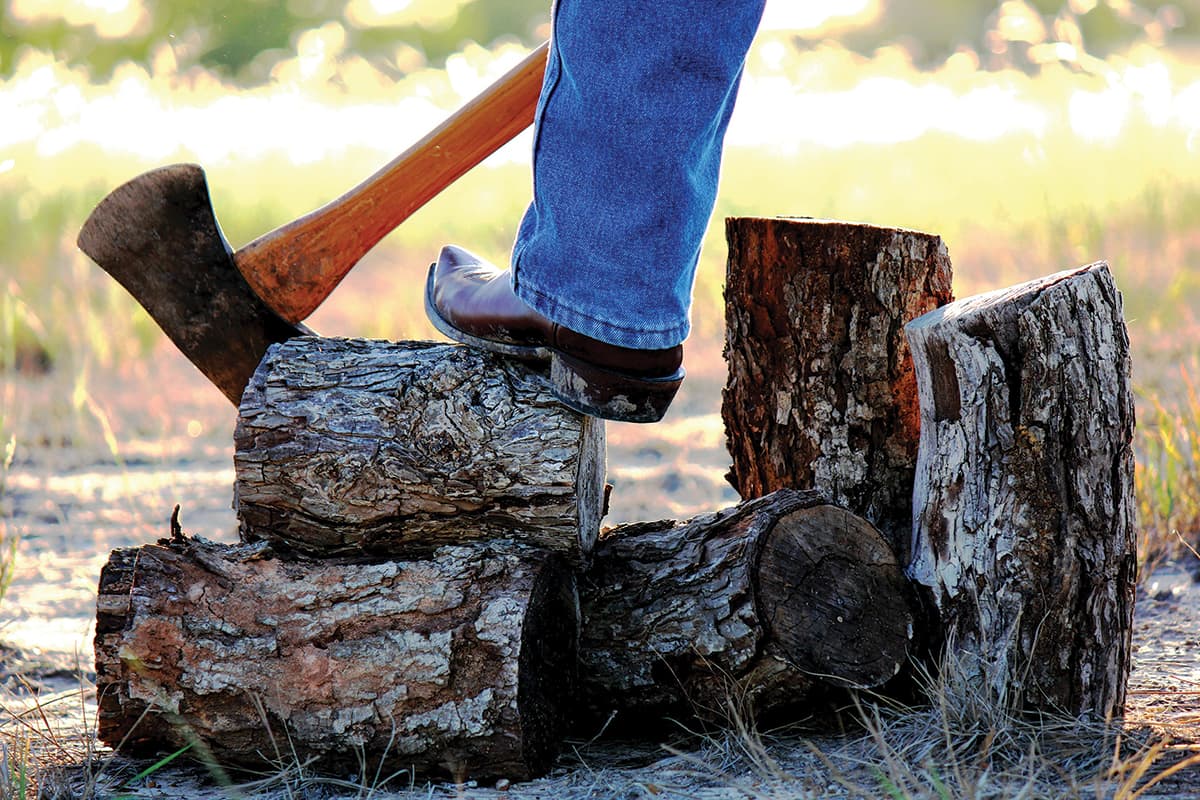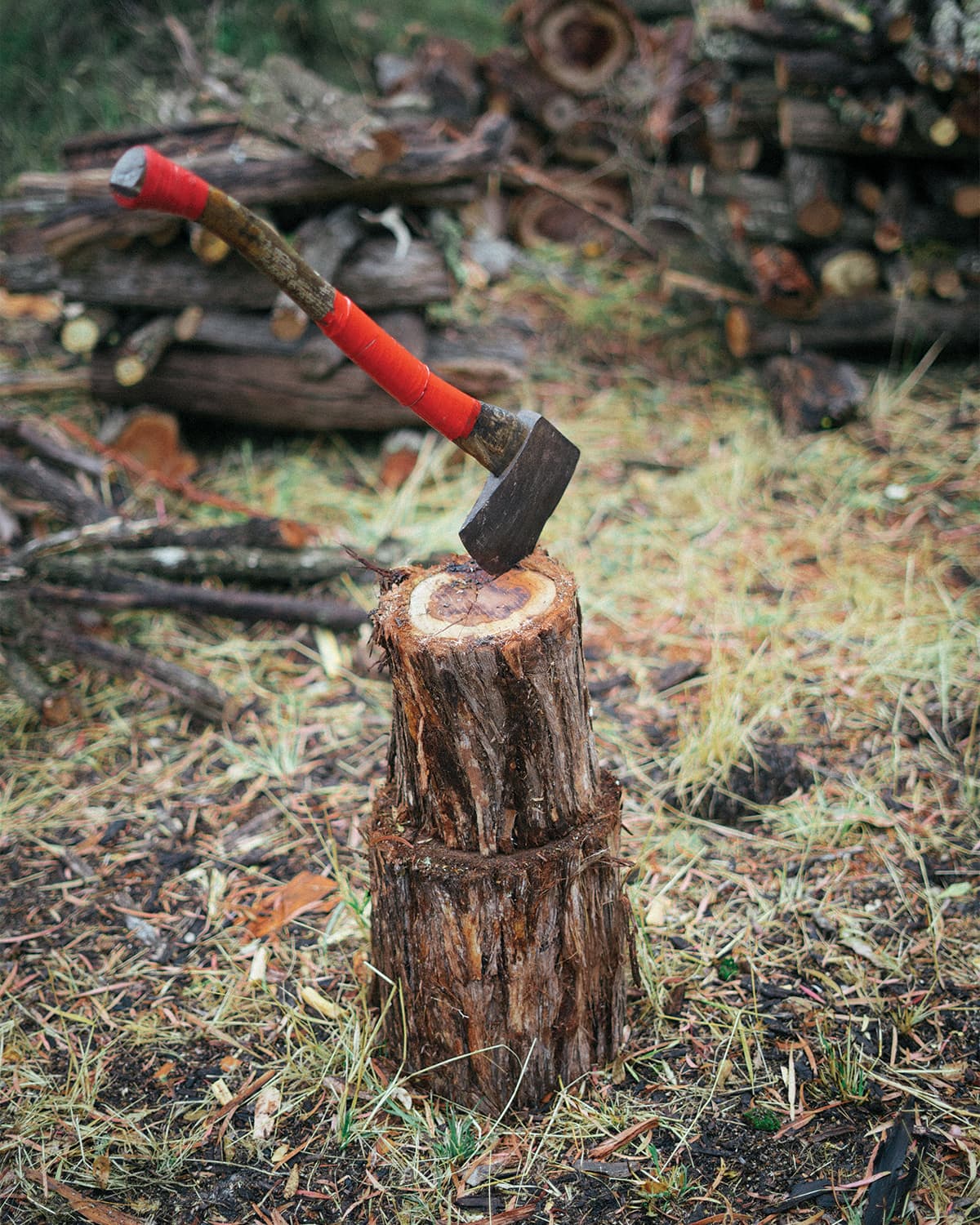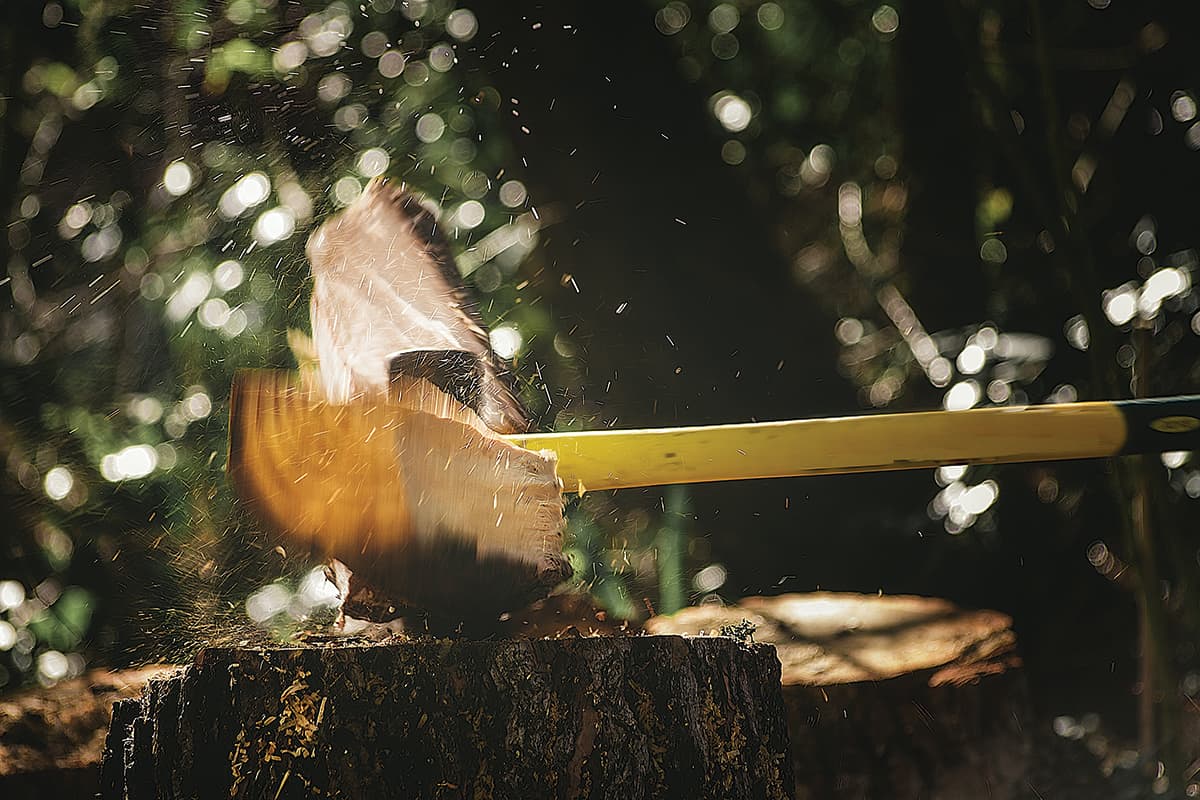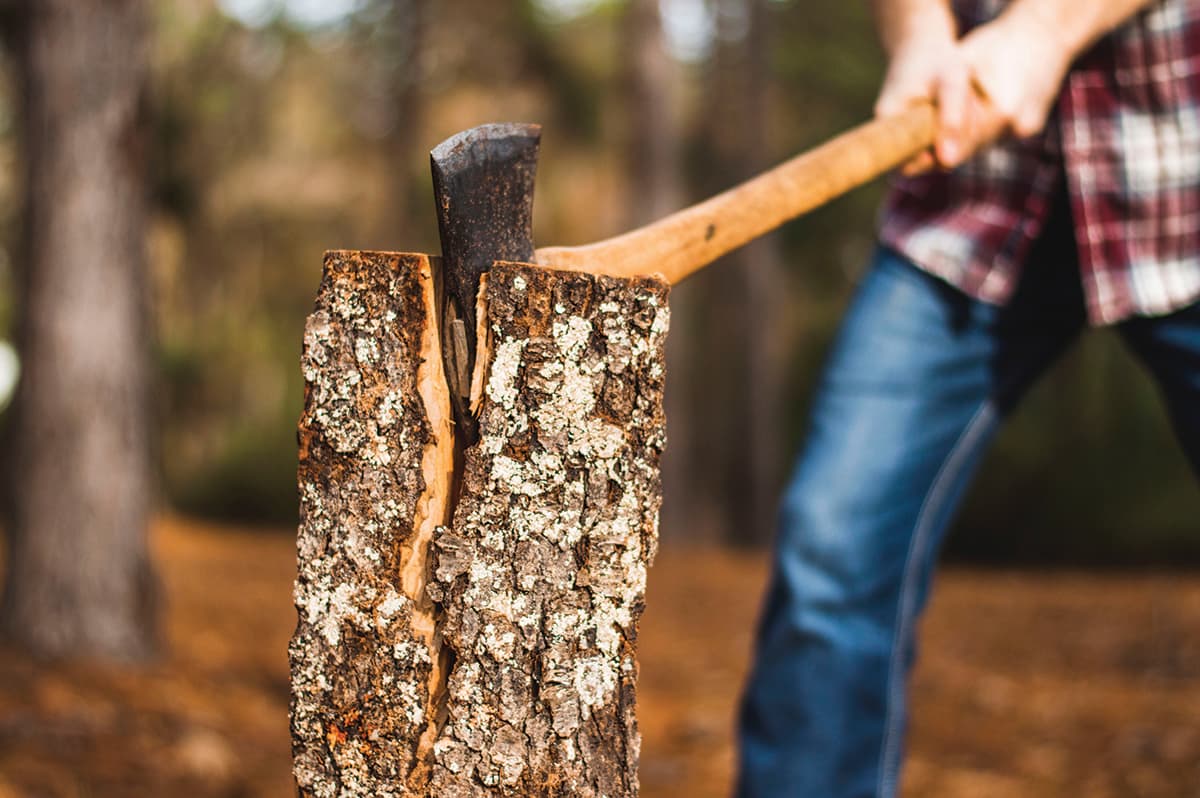There is no better time for a campfire than in the fall. As the air gets cooler, the fire becomes even more crucial to a camping trip.
It’s always great to be someone that other campers can rely on to help out with some tricky tasks. One of these is splitting fire wood. Here is a guide to help you split fire wood safely and effectively.

Tools and materials needed for splitting wood
- Protective clothing: safety glasses, long pants, work boots, gloves.
- Splitting maul or axe: a maul is heavier and wider than an axe. This makes it advantageous when splitting wood. An axe is better used for smaller pieces of wood.
- Chopping block: tree stump or short, wide round of wood
- 2 wedges (optional)
- Sledgehammer (optional)
- Dry fire wood
Step 1: Ensuring Safety
First, make sure you are completely protected and following safety precautions by wearing goggles, long pants, and sturdy boots to avoid any possible injury. Also, make sure that you are a safe distance from any other campers. When pieces of wood go flying, you need to make sure no one is in danger of being hit. The most important part of this process is your safety.
The sharpness of your tool is not as important as you may think. Even though an axe is often used for chopping down trees and cutting small pieces of wood, a heavier maul is best for making a deep impact and splitting wood in the best possible way.

Step 2: Set up Chopping Block
Wherever you plan to chop your wood, set up a chopping block. This can be a large level tree stump or a short and wide chunk of wood. This is an extremely important step as the block will help absorb the force of each blow and will provide a safe spot for the blade to land as the wood splits. It will also decrease the damages done to the maul. Make sure that as you are splitting your wood, you are checking on the block to ensure it is sturdy and planted on the ground firmly. An unsteady block can be very dangerous as it is much more likely to slip while striking with your maul.

Step 3: Wood Placement
If the wood you are splitting has nails in it, forget it. It is not worth the risk of any potential injury. Also, if the wood is curvy, maybe skip to a piece that is flatter. Any unusual circumstance could possibly result in an accident.
When you set up your wood on the chopping block, make sure that the piece is stable, and near the centre of the block. Examine the piece before you strike it. Look for hairline cracks in the log and try to aim so that the blade of the maul runs in the same direction as the crack. If there is no crack, aim in the centre of the piece. Avoid knots in wood as they can be very difficult to split. Aim your maul and begin swinging.

Step 4: Swinging
Unlike what you may think, splitting wood is not all about brute force. Instead, most of the impact comes from proper technique and proper placement.
Use the correct stance. Plant your feet shoulder width apart and place the maul on the spot that you plan to strike first with your arms fully extended in front of you. Next, take a half step backwards while holding the maul waist high, bend your elbows and raise the maul over your head. As you bring your arms down, concentrate on driving the maul directly down the centre of the log letting the weight of the tool do its work. If the log fails to split on first impact, pull and twist the maul hard to remove it. Rock it up and down to get it free. Repeat your swing until the wood splits. Try and strike it exactly where you hit it the first time, making sure it is centred before each blow.
A common issue with logs like this is that they may have knots in them, and they may be difficult to split. This is where wedges come in handy. Simply stick a wedge into a crack in the wood that you have made with its head facing up. Proceed to strike the wedge with the same form that you would with the maul. This should split the wood pretty quickly. Finish the job with your maul if the piece is still being stubborn.

Step 5: Know when to Quit
When you are tired (which happens quite quickly when splitting wood) it is time to stop. This is when injuries occur. Save some energy for the next time you have to do this and use what you have chopped for the time being. The only thing left to do is sit back and relax by the fire. You’ve earned it!



